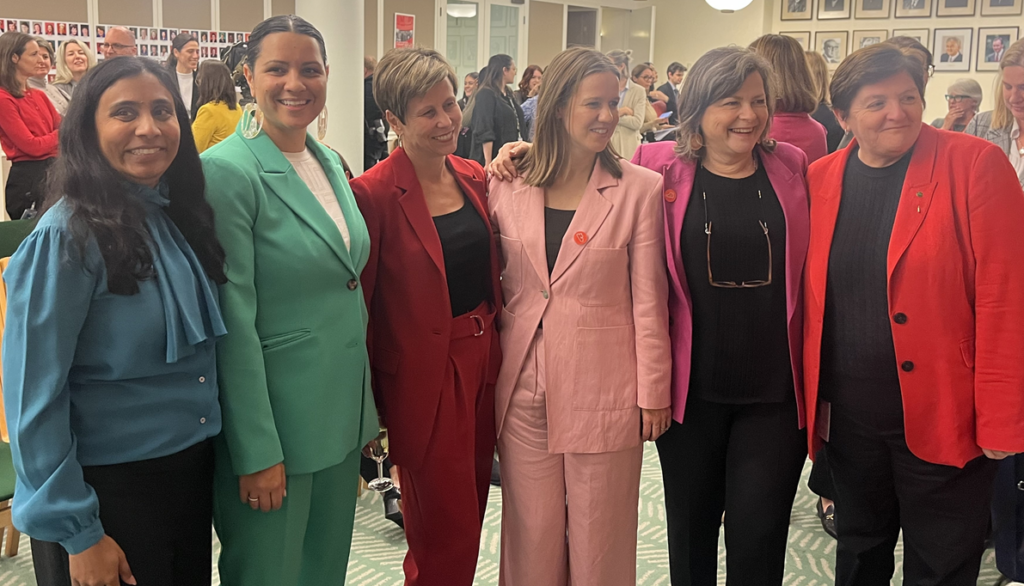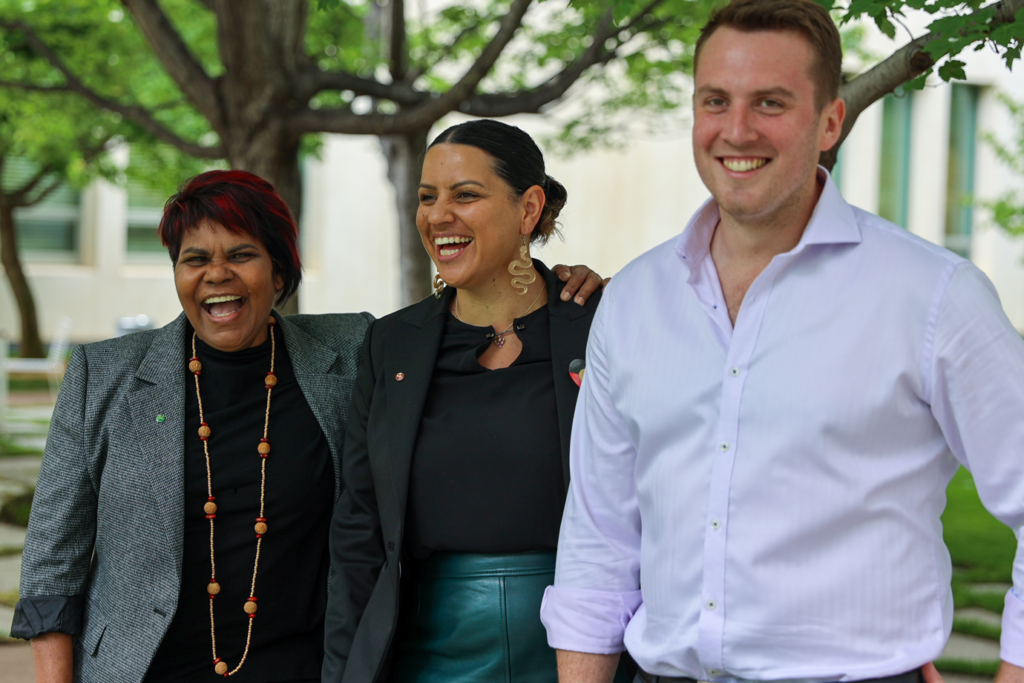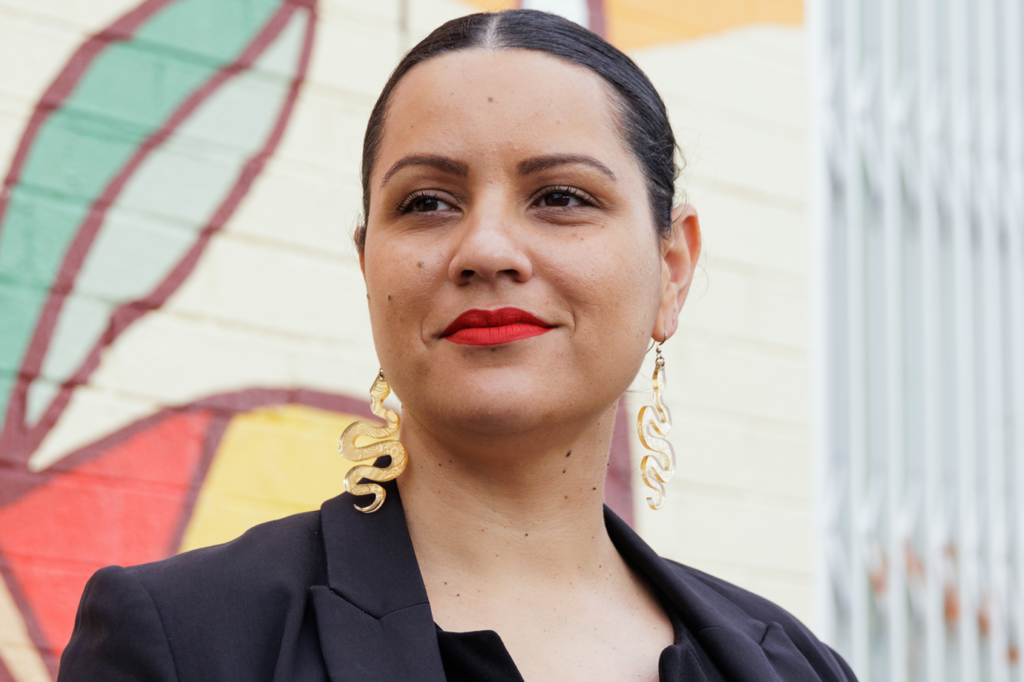Taking my seat in the federal parliament at 35 weeks pregnant with baby Ari, and as a mother to then 6-year-old Jude, was a significant moment for me and my family. And the significance for women around the country was not lost on me.
It remains an incredible privilege each day to serve in this role. I acknowledge the strong matriarchs and Aboriginal women in our communities, and their strength and resilience over 65,000 years. Without these women I wouldn’t know where I belong, be who I am or do what I do. I feel proud to be standing on their shoulders in our Federal Parliament.
As a member of the Albanese government, I stand alongside 53 other women in caucus in Australia’s first majority female government (52 per cent) – a historic achievement. Compare that to just 29 per cent of the Coalition, with only 24 women making up their party room to 60 men.
This wasn’t by accident. It was deliberate, and it’s a powerful example of the positive impact of quotas. This month marks 30 years since the 1994 Australian Labor Party (ALP) National Conference, where the ALP adopted Affirmative Action quotas for women to be preselected for winnable seats.
Lived experience is irreplaceable – the representation of women in our government has played a key role in our ability to make informed policy decisions that benefit the lives of all Australians, but particularly women and families.
The impact of this representation is evident. Under the Albanese government, we’ve seen a record women’s workforce participation at 63.2 per cent; the lowest gender pay gap on record (it is now 11.5 per cent, down from 14.1 per cent when the Opposition were in government).
We now have the most gender equal federal parliament in Australian history.

While it’s important to mark our achievements, we must commit to continuing to do better. Despite the success of gender quotas, full representation is still lacking. Only 7 per cent of current parliamentarians have a non-European cultural background even though:
- Nearly half of (48.2 per cent) Australians have at least one parent born overseas.
- A quarter of Australians (24.8 per cent) speak a language other than English at home.
- 18.6 per cent of Australians identify with a non-European cultural heritage.
- Just under 4 per cent of Australians (3.7 per cent) have First Nations ancestry and background across Australia, crossing one million just this year.
Just 23 years ago, Carol Martin became the first Aboriginal woman elected to any parliament in Australia. Recently, Northern Territory MP Selena Uibo made history as the first Indigenous woman to lead a major Australian political party. Today there’s an estimated 25 members of Parliament in Australia who identify as an Aboriginal or Torres Strait Islander. That’s 2.9 per cent of all federal, state and territory parliamentarians.
Of the 10 current Aboriginal or Torres Strait Islander Federal Parliamentarians, 9 are women.
Of the 15 First Nation parliamentarians across state and territory governments, 8 are women, so 53 per cent are women. That means that 68 per cent of First Nations parliamentarians across state and federal governments are women.
There is still a lot more work to be done to ensure that our parliaments (and our workplaces!) are representative and inclusive of all Australians. I want young First Nations and culturally and racially marginalised Australians to see politics as a viable career path for them. To stand on our shoulders, and know that our country will be better for it.

First Nations and culturally and racially marginalised (CARM) women often talk to me about having to work twice or three times as hard as their white or male counterparts to be taken seriously or get a promotion. They talk about facing a number of hurdles, including institutional racism, financial barriers and being at a disadvantage with their networks (because as we all understand, it is often who you know, not what you know).
I also know that CARM women often feel excluded from the national conversation. Our experience isn’t captured in the data, or articulated with urgency or nuance. CARM women want to feel seen and heard.
It’s a tough slog for us First Nations women and CARM women to climb the ladder, so I want you to know that when we are in meetings together or I see you posting on socials about your work or smashing your goals, it is not lost on me. I see you and you make me so proud!
There’s an important lesson here for all corporates and workplaces where the data is clear: organisations that prioritise diversity and inclusion significantly outperform those that don’t. According to a 2023 Diversity Matters report from McKinsey, organisations committed to diversity are 39 per cent more likely to see better performance. Organisations where women make up more than 30 per cent of the workforce are significantly more likely to financially outperform those with less female representation.
The Australian Centre for Student Equity and Success (ACSES) and the new Australian Public Service Culturally and Linguistically Diverse (CALD) Employment Strategy and Action Plan, are just two of the ways the Albanese Labor Government is working to provide these tools and opportunities.
Not only do we have a collective responsibility to leave no woman behind, it’s better for our economy too.
While I don’t pretend to have all the answers, it’s clear that First Nations and CARM women must have the tools and opportunities to maintain a seat at the table and make decisions on an equal playing field. It is time to have deliberate conversations about how we add some more color to leadership and power. Our words matter and so do our actions. We know the difference it can make.
I strongly believe and will always advocate for women to represent ourselves and our communities.
My message to all women is that you belong in Parliament, and in all places where big decisions are made. No matter where you come from or what stage of life you’re in.
Let’s keep making history.
Feature Image: Senator Jana Stewart.



